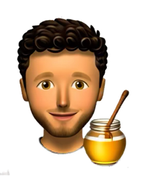Everything on the internet is good

So, look, everything on the internet is good. Not good good, obviously—not in the sense of “improving society” or “making people happy” or “helping me understand my taxes.” But, like, it’s fine. It’s competent. It’s digestible. It’s, at worst, medium. And this is a problem. You might be thinking: “I’ve read some pretty shitty things on the internet.” You’d be right. I don't mean the political takes, recipe blogs, or my mental health. Those all suck. But, generally speaking, most of the content we consume is good. Not great, but good.
The problem is that there’s too much of it. If you’re anything like me, you wake up every morning to an inbox full of newsletters, and you think: Oh, I should read all of these. You can't read them all, but you like the idea of reading them all. These will make me smarter, right? You do not, in fact, read all of them.
But you don’t unsubscribe, either, because what if today’s the day one of them contains The Secret? You know, the perfect take that you can repurpose at your next dinner party to make you seem effortlessly informed. The wisdom nugget.
And so, the newsletters pile up, unread. Eventually, you break down and unsubscribe from a few, but somehow the empty slots fill up with new ones. Rinse and repeat.
And yet, despite the fact that no one can possibly read everything, here I am, launching a newsletter. This is, by any reasonable metric, a terrible idea. Not the worst idea I’ve ever had—that honour goes to a now-defunct lip balm startup called Lipgasm—but it's definitely up there. The odds of you reading this regularly are low, not because it isn’t good, but because everything is good. The internet is an endless conveyor belt of decent content. The stuff you see has already been filtered, upvoted, aggregated, and optimized. Google has made a bazillion dollars creating highly secret algorithms that surface the best of the best. On social, Reddit upvotes it, Twitter retweets it, and what you’re left with is a sea of “pretty good.”
That’s the paradox. When everything is good, the great is really hard to find. It’s all fine, and so nothing stands out. It’s like TED Talks. Remember TED Talks? A decade ago, if you saw one, it was life-changing. They had the best of the best, and they were curated. Now, they’re still fine, but there are so many of them that they’re just background noise. Ask yourself why you don’t seek out TED Talks anymore?
And that’s the real challenge: Information alone isn’t enough. It has to be entertaining. If it’s not entertaining, it doesn’t matter how important it is—no one will read it. This is why Twitter threads full of half-baked nonsense get more engagement than double-blind-peer-reviewed-meticulously-researched academic papers from experts. It’s not because the nonsense is better; it’s because it’s fun. So here’s my theory. To make a newsletter that actually gets read, it needs to do three things, in this exact order:
- Be witty or humorous.
- Have original thinking.
- Be informative.
People say they read for information, but mostly, they read to be entertained. If something is original or compelling, they’ll keep reading. If it has a unique point of view, they’ll feel smart for reading it. If it’s informative, great, that’s a bonus. But the order matters. Start with the entertainment value, or nobody gets to the insight. Anyway, this is my newsletter. I hope you like it. Or at least, I hope you don’t unsubscribe before I say something that makes you look really cool at a party.

